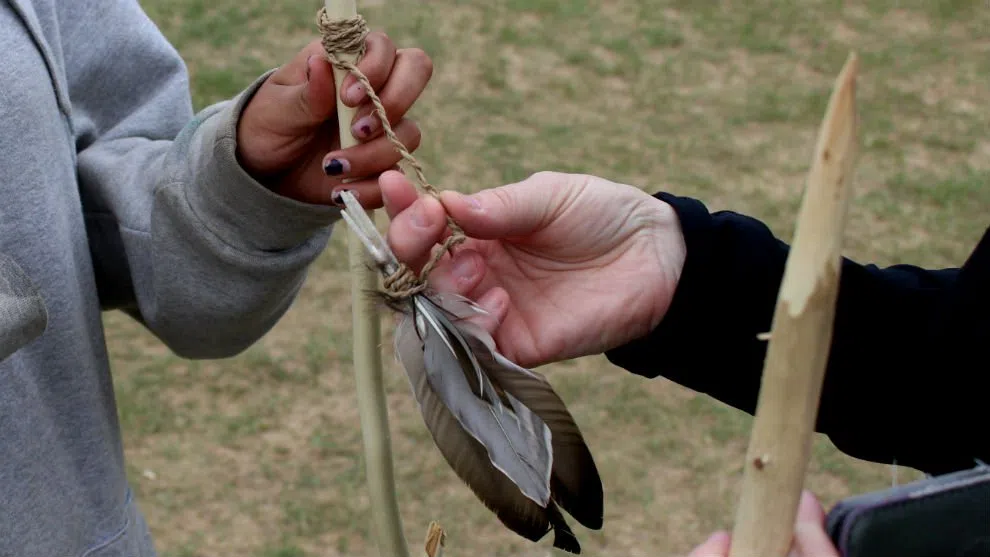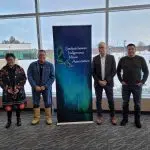
Students ditch phones to connect with nature
It’s not every day a Grade 9 student is encouraged to wield a spear at school. But practical outdoor knowledge is what the Living Sky School Division’s land-based learning program is all about.
This week the Grade 9 students at Spiritwood High School spent four days at a remote part of Chitek Lake, accessed only by boat, learning skills like how to build shelters, identify plants for medicinal purposes, track and trap animals, and build fires.
Century Papequash built a spear and distractor to hunt rabbits. She learned the best time to hunt rabbits and crafted the spear and distractor herself with help from guides. She described how if hunting, she would throw the distractor, a stick with feathers on it, near the rabbit so it thinks an owl is hunting it and will stay low and still. Then it is easier to aim the spear since the rabbit isn’t moving as much.
She said it feels pretty cool to have actually crafted something and said she’s going to take some of the knowledge she’s gained home with her.


